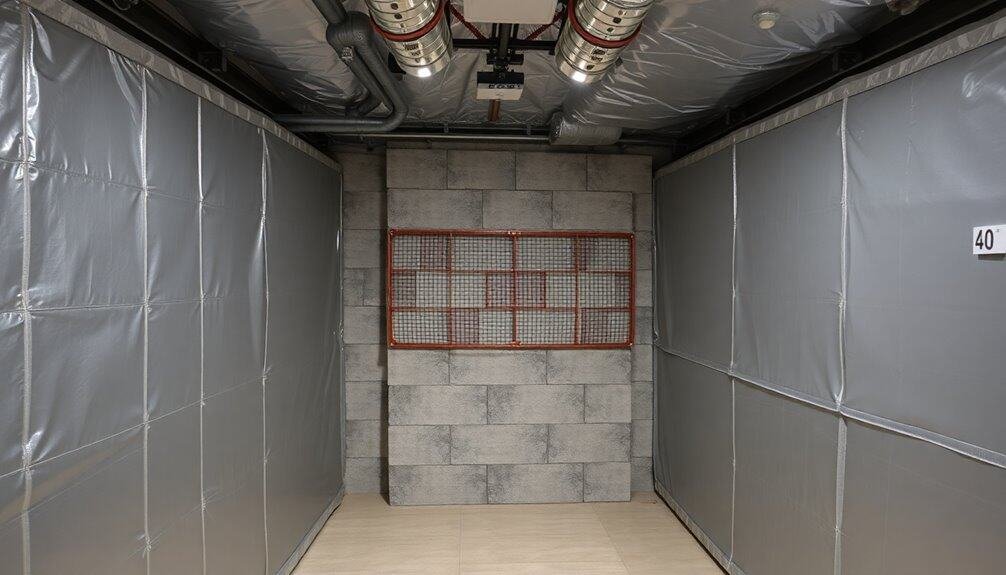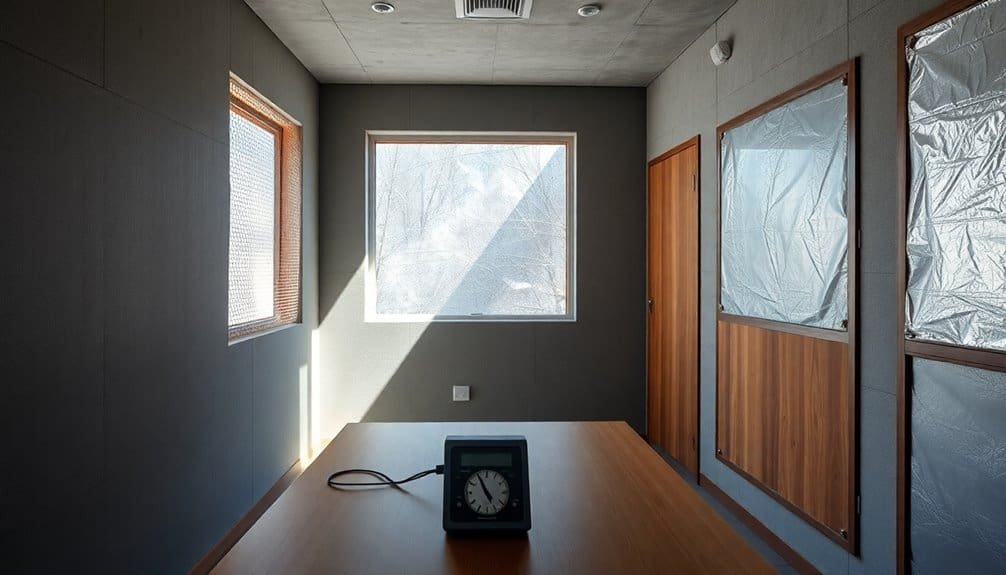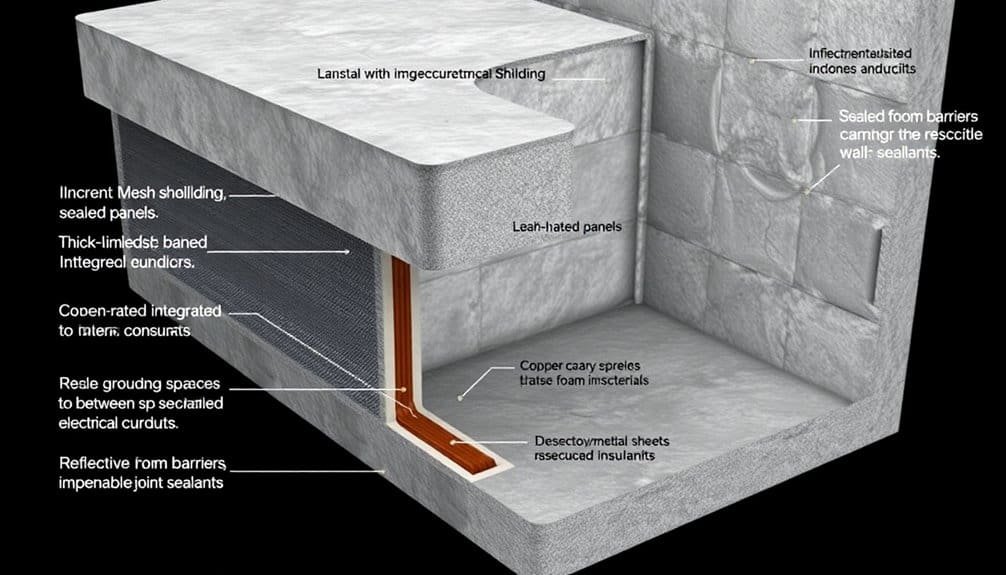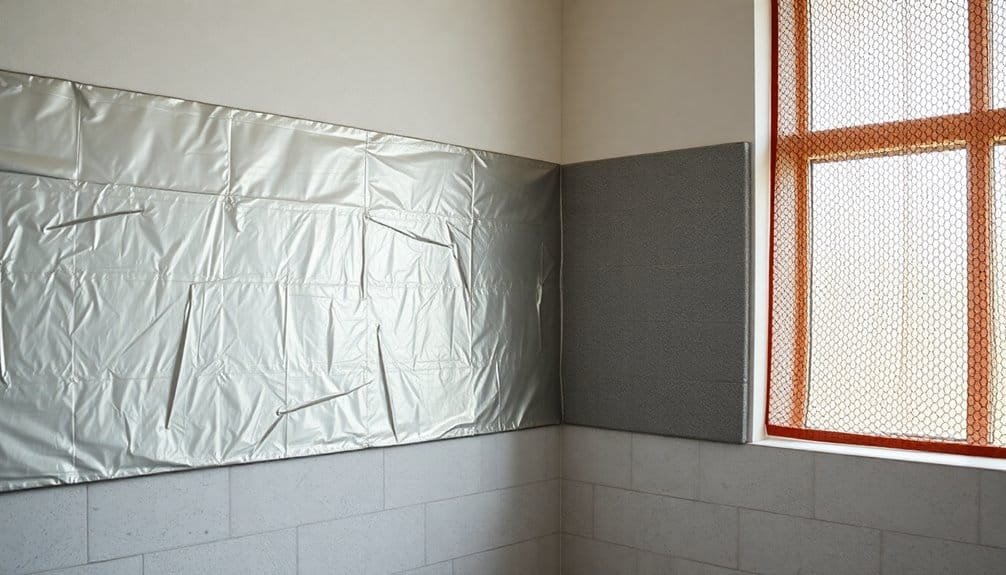How to Shield a Room From Outside Radiation

To shield a room from radiation, first identify radiation sources, both natural and artificial. Choose high-density materials such as lead or tungsten for effective blocking, and strategically position barriers, especially around doors and windows.
Calculate the necessary material thickness using the linear attenuation coefficient, and consider solutions like lead-lined walls or curtains. Regularly review and update your methods to ensure optimal protection.
Disclaimer: As an affiliate, I may collect a share of sales from the links on this page.
Understanding Radiation and Its Sources

Radiation permeates our environment, originating from both natural and artificial sources. Natural sources include sunlight, which emits ultraviolet radiation, while artificial sources consist of devices like X-ray machines and microwaves. Understanding the effects of ionizing radiation is crucial for minimizing health risks.
These radiations are classified as ionizing or non-ionizing. Ionizing radiation, such as X-rays and gamma rays, poses significant biological risks, causing DNA damage and mutations. In contrast, non-ionizing radiation, found in radio waves and microwaves, typically doesn’t cause harm. The electromagnetic spectrum varies in frequency and wavelength, affecting its penetration abilities and biological impacts. Understanding these sources helps you assess potential radiation risks and take necessary precautions. EMR is classified by frequency or wavelength into categories such as radio waves, microwaves, and visible light.
Selecting the Right Shielding Materials
Selecting the right shielding materials involves careful consideration of various factors including density, cost, environmental impact, and processability.
High-density materials like tungsten, with a density of 19.25 g/cm³, offer superior radiation blocking compared to lead at 11.34 g/cm³. While lead is generally more cost-effective, tungsten provides an eco-friendly alternative, reducing heavy metal risks. Additionally, materials like bismuth oxide and barium sulfate serve specific applications, enhancing safety in medical settings. Polymer-based composites allow flexibility in design and manufacturing, combining effective shielding with ease of use. Furthermore, the type of radiation should directly influence the choice of material to ensure optimal protection. The effectiveness of shielding materials also depends on the specific frequencies they are designed to block, ensuring comprehensive protection against potential hazards.
Each material’s performance should be evaluated based on shielding efficiency, energy absorption, and dispersion homogeneity.
Evaluating Room Design and Structure

When evaluating room design and structure, it’s crucial to assess multiple factors to guarantee effective radiation shielding. Start by examining the room’s location; consider adjacent low-occupancy areas, and verify compliance with local regulations.
Next, assess room penetrations: position doors and windows to minimize exposure, and shield utility installations. Evaluate room usage patterns, focusing on occupancy factors and anticipated workload. Incorporate radiation safety features, such as labyrinthine designs and appropriate airflow management. Additionally, incorporate radiation protection measures in your design to ensure safety for both staff and the public. Furthermore, ensure that shielding materials are compatible with existing structural elements to enhance overall effectiveness. Finally, design the room layout to maximize distance from radiation sources, maintaining structural integrity while allowing for future expansion and integrating dosimetry systems to monitor radiation levels effectively.
Calculating Thickness and Effectiveness
Calculating the thickness and effectiveness of radiation shielding involves understanding several critical parameters that influence performance.
First, consider the linear attenuation coefficient (μ) of your chosen material, like lead or concrete. Next, factor in workload (W), use factor (U), occupancy factor (T), and distance (d) from the radiation source.
You can use deterministic methods for quicker calculations, while stochastic methods, such as Monte Carlo simulations, yield better accuracy.
Finally, make sure you account for both primary and scattered radiation. Regularly review your calculations to align with changing equipment or workload conditions, adhering to regulatory guidelines throughout the process.
Implementing Shielding Solutions

Effective radiation shielding starts with the careful selection and application of suitable materials. Lead is commonly used due to its lightweight, low-volume attenuation properties. You can apply lead as sheet lead, lead bricks, or lead-lined blocks.
When lead isn’t feasible, concrete and steel serve as effective alternatives. Walls should consist of pure lead for maximum protection. Modify doors and windows with lead-lined components to maintain shielding continuity.
Additionally, guarantee all penetrations for utilities are adequately shielded to prevent radiation leaks. Flexible lead-lined curtains also offer a temporary shielding option, enhancing safety during procedures.
Maintaining and Inspecting Shielding Systems
Maintaining and inspecting shielding systems is essential for guaranteeing safety and compliance in environments exposed to radiation. Regular maintenance checks help preserve structural integrity, preventing material degradation and identifying potential leaks.
Conducting visual inspections allows you to spot visible damage early. You should perform radiation monitoring to assess the shielding’s effectiveness continually. Training personnel involved in inspections guarantees they know proper procedures and safety protocols.
Documentation of maintenance activities, audit procedures, and findings provides crucial reference data for decision-making. Utilizing advanced tools, such as radiation detectors and imaging technologies, can optimize evaluation accuracy and enhance safeguarding measures.
Compliance With Regulatory Standards
Because radiation poses significant health risks, ensuring compliance with regulatory standards is critical for facilities that handle radiation-emitting equipment.
The National Council on Radiation Protection and Measurements (NCRP) provides essential guidelines, often referenced in state regulations. You must adhere to Environmental Protection Agency (EPA) standards and your state’s specific requirements, as over 35 states mandate shielding designs.
Follow the ALARA principle to minimize exposure. Regular measurements should keep radiation dose rates below specified limits, such as 0.02 mSv/h.
Finally, document all shielding assessments to uphold compliance and collaborate with experts for tailored solutions that meet all necessary regulations.
Frequently Asked Questions
What Are Common Misconceptions About Radiation Shielding?
You might think complete shielding’s possible, or that low-dose exposure is safe, but radiation accumulates over time. Remember, shielding’s essential in all situations involving radiation exposure, not just high-risk or long procedures.
How Can I Test My Room’s Radiation Levels?
To test your room’s radiation levels, use a Geiger counter for quick detection, or a pressurized ionization chamber for accuracy. Make sure to take readings at multiple locations for a thorough overview.
Are There DIY Options for Radiation Shielding?
Like a knight donning armor, you can explore DIY radiation shielding options such as Faraday cages, copper mesh, and aluminum screens. With careful selection, you’ll protect your space without breaking the bank or sacrificing safety.
What Is the Lifespan of Shielding Materials?
The lifespan of shielding materials varies based on factors like usage, radiation intensity, and maintenance. Lead-based options typically last many years, while alternatives may require more upkeep to guarantee effective protection over time.
How Does Radiation Exposure Vary by Location?
Radiation exposure varies based on location due to altitude, terrestrial sources, and regional factors. You’ll find higher doses in areas like Colorado compared to coastal regions, markedly influenced by cosmic and radon radiation levels.
Conclusion
To shield a room from outside radiation, plan carefully and execute precisely. Choose suitable materials, assess room design, and calculate necessary thickness for effective protection. Implement and maintain these solutions, adhering to regulatory standards for ongoing safety. Systematically approach this task to minimize exposure and protect your space from external radiation.




